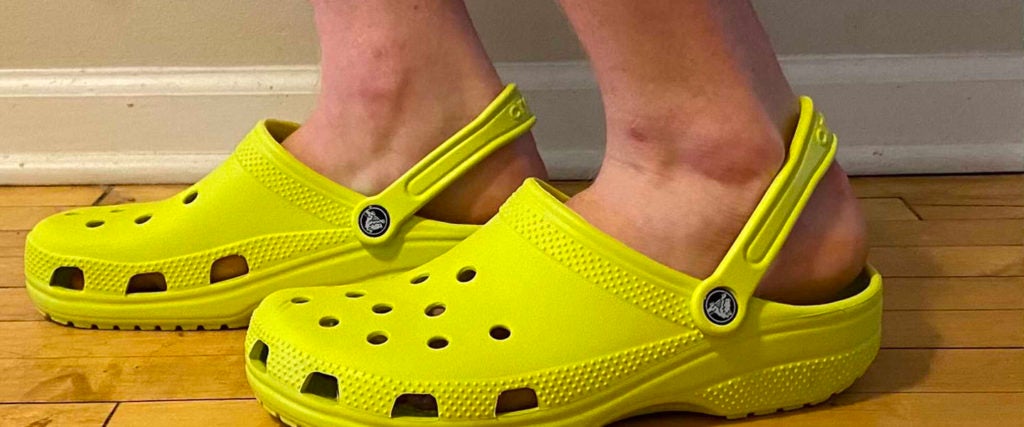It could be due to a himbo revival, an insatiable appetite for ironic footwear or just the fact that people hardly left their houses for the last 18 months, but whatever the case, it’s clear that Crocs are back. And today’s Croc devotees see the shoe as something much more than a lightweight utilitarian clog worn by the nurses and octogenarians of yore. No, these casual sartorial dreamers want to turn their Crocs into full-on athletic footwear by entering them into what the internet has deemed “sport mode.”
tell me why we were running and taliah said “I CANT KEEP UP!!! MY CROCS ARE NOT ON SPORTS MODE!!!!” ? pic.twitter.com/OF68M65gw7
— Alyssa Marie ?? (@photosnfreckles) January 29, 2019
Sometimes you just have to put the crocs in “sports mode” and get to work #mostversatileshoe pic.twitter.com/YZ25zHR5UU
— Meg (@MeganPrice888) April 26, 2018
By simply moving the Croc’s strap from resting on the front of the shoe to perched above the heel, Crocs-wearers are pushing the boundaries on the clog’s otherwise classic form and function.
But is this just an additional shade of irony to the overall trend? Or can entering one’s Crocs into sport mode truly aid in running away from Margaritaville security or sprinting down the dock to catch a drifting pontoon?
As with any good research, it’s important to consult the laws of physics before testing any theories out in the real world. For that, I turned to professional nuclear and mechanical engineer Jim Mumford.
To start, Mumford reminds me that for “every action (or force), there is an equal and opposite reaction (or force).” “For example,” he says, “the chair you sit in is pressing against you just as hard as your behind is indenting into the chair.”
To better understand the efficacy of the Crocs in sport mode, we want to look at the competing forces of friction. Specifically, “the friction caused by your foot pushing down into the shoe itself, versus the force of friction between the Crocs and the ground,” says Mumford, who provided the rough diagram below for visual learners.

When the Crocs’ strap isn’t wrapped behind the ankle, “the only thing keeping the shoe on your foot is the friction between your foot and the Croc being equal to or greater than the friction between the Croc and the ground.” Thus, he adds, “moving slowly in ‘relaxed mode’ isn’t a big deal because the friction between your foot and the shoe is more than [the friction] between the sole of the shoe and the ground.”
But what happens when, say, a leisurely stroll across your lawn in your Crocs turns into a full-out sprint? “Running means more force required to move, and therefore more friction on the ground,” Mumford explains. “So much more force, in fact, that your foot may not have enough friction between it and the shoe to stay in place. As such, the shoe stays put, and your foot flies out.”
Rather than attempt to calculate the additional force of running against the friction coefficient for sweaty feet and whatever hybrid rubber Crocs are made of, I put Mumford’s theory to the test.
Running with Crocs in sport mode:

Running with Crocs in relaxed mode:

Turns out, putting your Crocs into sport mode is absolutely necessary if you, say, need to jump to catch a flying newspaper headed toward your front door or run away from a sedan pulling into your driveway.
When there isn’t enough friction to keep your foot inside the Croc, it’s time to apply sport mode as the strap creates “a counter force on your foot from the shoe itself, so you’re no longer relying on your sweaty foot to stay in the shoe,” explains Mumford.
For those who remain unconvinced, here’s a slow-mo video of the sports mode strap keeping the Crocs securely on my feet as I jump as high as I possibly can. Truly poetry in motion.

“The force between the back strap and your shoe now equals the friction force, allowing you to run in your Crocs,” Mumford concludes, “though I’m not sure why you ever would.”

